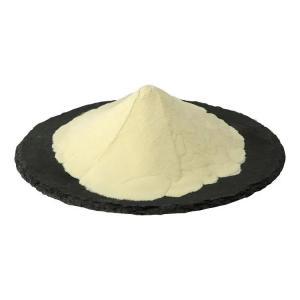Phosphatidylserine for Neuroprotection
Time:2025-02-24Phosphatidylserine is a naturally occurring phospholipid found in all cell membranes and demonstrates significant potential in neuroprotection through several mechanisms:
Ⅰ.Protective Effects on Neuronal Cells
1. Maintaining Cell Membrane Integrity:
The integrity of neuronal cell membranes is crucial for their proper functioning. As a vital component of the cell membrane, phosphatidylserine helps maintain membrane fluidity and stability. During neurodegenerative diseases or neuronal injury, oxidative stress and other factors can damage cell membranes. Phosphatidylserine contributes to repairing and stabilizing membrane structures, reducing cell damage and preventing cell death.
2. Regulating Cellular Signaling Pathways:
Phosphatidylserine participates in various intracellular signaling processes and can activate critical signaling pathways, such as the PI3K/Akt pathway, which plays an essential role in neuron survival, growth, and differentiation. By activating these pathways, phosphatidylserine promotes neuronal repair and regeneration, enhancing the cells' resilience against damage.
Ⅱ.Modulation of the Neurotransmitter System
1. Promoting Neurotransmitter Synthesis and Release:
Phosphatidylserine plays a regulatory role in neurotransmitter synthesis and release. For instance, it can influence the production and release of acetylcholine, a neurotransmitter closely associated with cognitive functions such as learning and memory. In the brain, phosphatidylserine provides essential materials and an optimal environment for acetylcholine synthesis, thereby enhancing neurotransmitter release and improving cognitive function. This can help alleviate neurotransmitter deficiencies commonly observed in neurodegenerative diseases.
2. Regulating Neurotransmitter Receptor Function:
Phosphatidylserine can also modulate the function of neurotransmitter receptors, helping maintain their sensitivity at normal levels. For example, it can influence the activity and functionality of glutamate receptors, ensuring proper glutamatergic neurotransmission. This prevents neuronal damage caused by excessive glutamate excitation or receptor dysfunction, thereby playing a significant role in neuroprotection.
Ⅲ.Role in Neurodegenerative Diseases
1. Alleviating Alzheimer's Disease Symptoms:
Alzheimer's disease is a common neurodegenerative disorder characterized by cognitive decline and memory loss. Studies have shown that phosphatidylserine can improve cognitive function in Alzheimer's patients. This effect may be achieved by reducing β-amyloid plaque deposition, regulating tau protein phosphorylation, and mitigating neuronal damage, thereby slowing disease progression.
2. Easing Parkinson’s Disease Symptoms:
Parkinson's disease primarily involves the degeneration and death of dopaminergic neurons in the substantia nigra. Phosphatidylserine may help protect neural function in Parkinson's patients by regulating dopaminergic neurotransmission, alleviating oxidative stress, and reducing inflammatory responses. This can help improve motor symptoms and enhance patients' quality of life.
Ⅳ.Enhancement of Cognitive Function
1. Improving Memory:
Synaptic connections and signal transmission between neurons are key processes in learning and memory. Phosphatidylserine enhances synaptic plasticity and promotes information transfer between neurons, thereby improving memory and learning abilities. Research suggests that phosphatidylserine supplementation can alleviate memory decline in older adults and enhance learning efficiency in younger individuals.
2. Enhancing Attention and Cognitive Flexibility:
Phosphatidylserine helps maintain normal brain function, increasing alertness and attention, allowing individuals to focus more effectively on thinking and learning tasks. Additionally, it helps balance neurotransmitter levels and improves brain metabolism, thereby enhancing overall cognitive ability and mental flexibility.


 CN
CN





